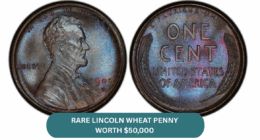INDUSTRIAL COATINGS
Pigments are nothing but organic or inorganic dispersals that are insoluble in nature and hold the consistency of an ink or a paint. Industrial colors have been in use since many a centuries all over the world. The first discovery of synthetic pigment was of white lead (Lead Carbonate) and was also known as “Venetian Ceruse”. It was made in ancient Greece. Theophrastus of Eresos (300 BCE) was the first to describe its preparation.
STEPS OF PIGMENT MANUFACTURE
Packaging and construction industry contribute expansively to the production of pigments. Manufacture of pigments is intensively laborious. During manufacture, there are three vital stages that determine the final product.
They are:
- Synthesis:
Chemical identity of the final product is concluded during the foremost step of synthesis. The pigment that is obtained at the end of this process is in crude form. Pigment identification is conducted by two major systems that depend on chemical structure. Two chemically balanced pigments with varied end-use properties can be obtained by surface treatment.
- Finishing:
Synthesis of crude pigment is followed by the process of finishing. Finishing determines the principal size of particles of the pigment. To modify the allocation of particle size of pigments, there are multiple mechanical & chemical processes that are useful in increasing or decreasing the size. Ease of dispersion, opacity & tint strength affect the properties of the pigment. Without further processing, certain standard pigments are given out as press cake which is the outcome of finishing phase.
- Surface treatment:
The concluding phase of pigment manufacturing is application of one or more surface treatments. Surface treatments can impact physical properties of the end pigment. Physical properties such as dispersion viscosity, coating gloss, ease of dispersion and light fastness can undergo alterations after surface treatment. During this phase, blending and drying with additional components can also be implemented.
DIFFERENCE BETWEEN HPPs & CLASSICAL PIGMENTS
Pricing is the major point of difference when traditional pigments are compared to a high performance pigment [HPPs]. HPPs are valued higher when improved properties and cost-in-use are considered. Factors such as additional manufacturing steps and chemicals opted for enhanced properties contribute to the cost of HPPs. Keeping in mind the total formulation of pigments, the exact cost of a raw material is the cost in use.
WHY CHOOSE HIGH PERFORMANCE PIGMENTS
The color strength and opacity are two major properties that powerfully impact the cost in use. In traditional pigments, these two major properties detract from each other. In similar color space of a traditional pigment, enhanced chroma and opacity can be obtained in HPP by equally concentrating on surface treatment after the phase of finishing. There are certain properties that enhance and contribute to value propositions for HPPs. These include resistance to light, chemical and fade resistance. Better color acceptance and shorter dispersion times are results of innovative surface treatments. During paint manufacturing, the aforementioned processes help minimize time and cost expenditure.
YELLOW COLOR FAMILY
Shades of yellow in market of industrial coatings are used predominantly in road signs and also in construction equipment. HPPs in yellow color space provide exceptional fade resistance, high opacity and great chroma. Pigment Yellow 139 is an important shade that belongs to this family. When compared to classical pigments, HPPs are clearly a better choice. A remarkable set of pigments ranging from green shade to neutral yellow is Bismuth Vanadate Yellow [PY 184].
ORANGE COLOR FAMILY
When compared to classical orange pigments, Orange Complex Inorganic Colored Pigments offer a higher fade resistance and opacity. DPP Orange [PO 73], also known as Pigment Orange 73 provides a high dispersion with higher chroma making it an important choice.
BLUE COLOR FAMILY
Pthalocyanine Blue Pigments [PB 15:X] are remarkably high performing pigments that are important for industrial coatings. The spectrum of these pigments range from shades of green to shades of red. HPPs are known to have better fade resistance, color acceptance, ease of dispersion and better chroma when compared to PB 15 products. This is a result of advanced surface treatments of HPPs.
RED COLOR FAMILY
Red color is a vibrant part of one’s surroundings. It is present everywhere-whether it is an immediately stop sign or a Ferrari. Important properties of red color pigments are supreme fade resistance and high chroma. Not every classical red pigment exhibits a high chroma-some are unable to maintain their initial intense color. Certain pigments of DPP Red pigments offer higher opacity, fade resistance and deep chroma. These pigments range between Scarlet [PR 255] and Rubine [PR 264].
While bearing in mind the economical aspect of use and price of HPPs, one can achieve better products that exceed economic prospects and offer supreme performance in line with the choice of formulation.
Bob Andrews is a content editor for Landscape Insight, With a background in journalism, Bob brings a unique perspective to his role as he oversees the creation and publication of a wide range of content, including articles, podcasts, and videos. You can reach Bob at – bob@landscapeinsight.com or by Our website Contact Us Page.








